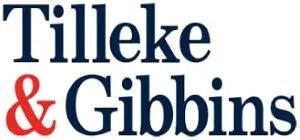The formation of a single market and single production base by 2015 will permit companies within ASEAN member states to freely move their capital and will serve to effectively break down existing trade barriers that currently stunt intra-regional trade within the ten-member bloc.
The implementation of consistent standards within ASEAN countries for each product, including related rules and regulations that conform to international standards, will, in theory, ensure the removal of such trade barriers or obstacles.
"One Area, One Rule" is the term commonly used to describe the ASEAN Economic Community (AEC), which will officially be implemented by 2015. For several years, regulatory authorities in each ASEAN country have been embroiled in discussions on the main rules to implement across a range of tightly regulated sectors—including cosmetics, food, pharmaceuticals, and agricultural products—with a goal to achieving the objective of "One Standard, One Test, Implemented Everywhere." But harmonization of the rules has not yet reached an advanced stage for all products.
An overview of the some of the harmonization rules that have already been implemented, along with those that are in the process of being put in place, is provided below.
One Harmonization Scheme for All
Cosmetics. On January 1, 2008, ASEAN member states implemented the ASEAN Harmonization Cosmetics Regulation Scheme. As a result, a streamlined system and an efficient registration process have replaced the previously chaotic system, and there is now just a solitary category for cosmetic products.
The Thai Food and Drug Administration (FDA) implemented a new online cosmetic product registration system on November 1, 2010. Registrations are mostly conducted online, which is less time consuming, and there is now only one category of products to be registered, namely, notification cosmetics.
Pharmaceuticals. One of the main concerns of member states was that each local FDA had different requirements for registering pharmaceutical products in each ASEAN country. Therefore, the pharmaceutical industry was one of the first industries pushing for the implementation of a harmonized regulatory scheme, to complement and facilitate the objective of developing an ASEAN Free Trade Area, and in particular, the elimination of technical barriers to trade posed by these regulations.
Following the ASEAN harmonization, on January 1, 2009, the Thai FDA implemented the ASEAN Common Technical Requirements and Dossier (ACTR/ ACTD) on Quality, Safety and Efficacy, which provides guidelines on analytical and process validation, stability studies, and bioavailability/bioequivalence.
Other amendments to local laws are also under consideration, so as to be in line with the upcoming AEC harmonization schemes. In addition, to facilitate the registration of products in each country, the Thai FDA is currently considering accepting bioequivalence studies that are conducted in foreign countries for generic products.
Agricultural products and livestock. Harmonization of the requirements for agricultural products is also well underway. For example, in 2006, the ASEAN Good Agricultural Practices for Fresh Fruit and Vegetables, or ASEAN GAP, was adopted as a standard for the production, harvesting, and post-harvest handling of fruits and vegetables in the region. Several other ASEAN harmonization standards have also been implemented, such as 13 criteria for the accreditation of livestock establishments and 3 criteria for the accreditation of livestock products.
Steps Toward Harmonization
Medical devices. Each member state has until 2014 to implement the new requirements established by the Medical Device Working Group, to finalize the harmonization process for all medical devices. This includes formulating a common definition for medical devices which is derived from the Global Harmonization Task Force definition, harmonizing the classification of the products (five classes based on the assessed risk of the products), developing a common list of international medical device standards to obtain similar quality assurance, and agreeing on a Common Submission Dossier Template (CSDT), among others.
In Thailand, discrepancies remain in the product registration process for medical devices, but these are now being addressed. For example, blood bags, which are usually classified in most other countries as medical devices, were previously categorized in Thailand as drugs. Due to a recent change in legislation, however, a blood bag will be classified as a medical device moving forward.
The Thai FDA has also announced that it will be considering the CSDT by 2012–2013, and preparations are underway for the implementation of the ASEAN Medical Device Directive (AMDD) in the next four years. The Thai FDA is now requiring local manufacturers' facilities to obtain a Good Manufacturing Practice Certification, which is equivalent to international standards like ISO 13485.
Food. Food safety is the one of the main objectives of the AEC. Thus, in 2009, the AEC adopted the ASEAN Integrated Food Security Framework and Strategy Plan of Action for ASEAN Food Security. The AEC is also considering using the Codex General Standards for Food Additives (GSFA) as the basis for harmonization.
The Thai FDA also intends to establish the Food Alert System of Thailand (FAST), in order to be linked up to the ASEAN Rapid Alert System for Food and Feed (ARASFF), when the AEC is implemented in 2015.
Conclusion
Implementation of the AEC will have a broad impact on ASEAN countries. Therefore, each ASEAN country needs to prepare itself for the implementation of both regulations and quality standards of goods in order to gain substantial economic benefits and show that it should be considered as a strong and open player in the ASEAN market. In the meantime, it will be important to monitor whether the AEC will move toward a more general harmonization system, such as the systems that have already been planned, with a view to becoming more like the European Union in regard to the protection of intellectual property rights.
The content of this article is intended to provide a general guide to the subject matter. Specialist advice should be sought about your specific circumstances.

